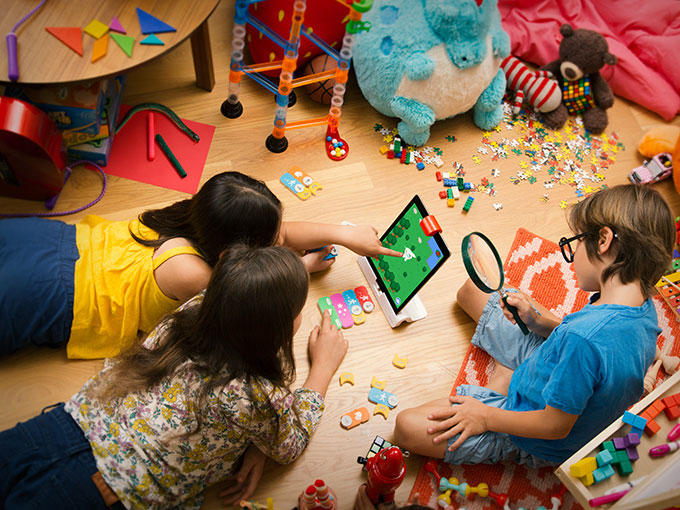The impending explosion of augmented reality and artificial intelligence—undeniably ushered in by this past summer’s launch of Pokémon GO—has been dominating conversations within the kids digital space throughout 2016. And now a US$24-million Series B funding round secured by AR and AI platform Osmo speaks volumes about how traditional kids companies are viewing the space.
Mattel, Houghton Mifflin Harcourt, Collab+Sesame and Shea Ventures have led Osmo’s latest funding round, which will be used to expand AI capabilities and content. The companies join investors Accel, Upfront Ventures and K9 Ventures, which previously put US$14.5 million into the Palo Alto-based company.
Osmo has a suite of seven programs that incorporate apps and physical pieces to teach coding, physics and digital literacy, and the kits cost between US$39 and US$189. The company launched in 2014 with Words, Tangrams and Newton, and then expanded into STEM-focused apps Masterpiece, Numbers, Coding, Monster and Pizza Co. The apps are aimed at children five to 12 years-old, except for Monster, which is aimed at four- to nine-year-olds and is in more than 20,000 schools.
CEO and co-founder Pramod Sharma says the investment isn’t necessary for day-to-day operations, but rather for future growth. For one thing, the apps are only available as beta versions in the US outside of schools, but they are set for a wider release next year. As for other expansions, Sharma has a checklist in order.
“Firstly, we’re going beyond an iPad into an iPhone, and the second thing is we are going to focus heavily on getting some iconic IPs onto our platform with the help of our new partners,” says Sharma. “The core of Osmo is AI…so we’re thinking about building our next version of that. We want to use complex hand gestures and all the interactions that you can do with that.”
“HMH has such a strong distribution network in the US, and we do expect that they will start pushing the product harder next year as a part of their own core offering. Then we’ll have a network to scale Osmo,” says Sharma, adding that he wants to significantly grow Osmo’s content library over the next three years.
“At the very high level, the way children interact with content is fundamentally shifting. So if we go back 10 years, it was a lot more physical with a lot more toys,” says Sharma. “Today, because of iPads, tablets and other devices, digital is really becoming such a central part of kids’ lives. And companies are trying to figure out how their products are going to fit into this new world.”
Sharma says Osmo likely stood out for Mattel and HMH because it effectively merges both physical and digital worlds.
“One of the things that has helped us is that teachers and parents really value the hands-on element that incorporates the screen,” he says. “I’m excited to go further beyond that.”
























